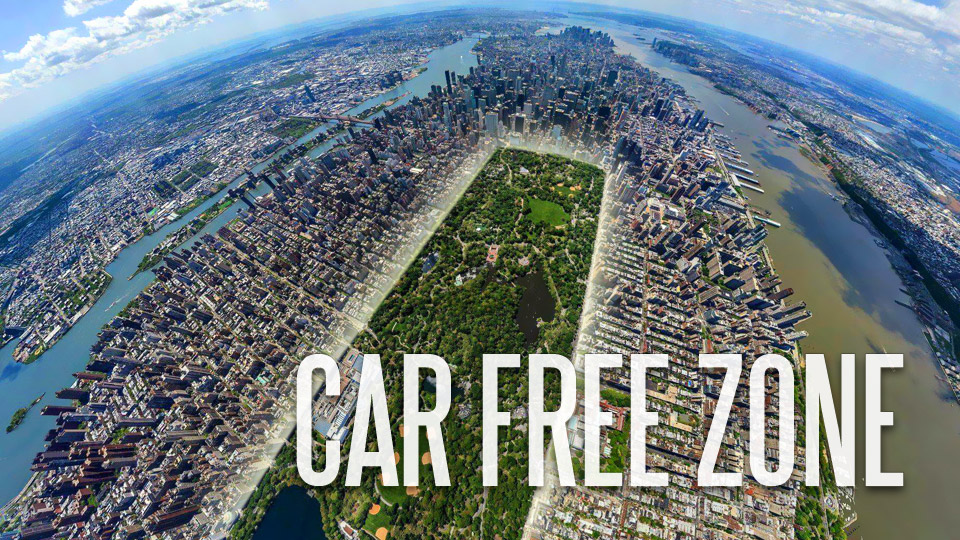
Summary & Quick Facts
- A ban on private vehicles driving in Central Park went into effect June 27.
- Motorists have been banned from the “loop drives” in the northern part of the park since 2015.
- The latest car ban now extends to most of the park.
- The transverse roadways at 97th, 86th, 79th and 65th Streets are not affected by these changes.
- The car ban is part of the city’s efforts to cut down on traffic accidents and air pollution in the park.
Central Park is Going Car Free
A big change went into effect that drivers who frequent Manhattan and its famed Central Park will notice. Earlier in the year, the city instituted a car ban in the park. The car ban went into effect in early June and now much of Central Park is car-free below 72nd Street. The long-awaited move aims to cut down traffic accidents and air pollution in the most-visited urban park in the United States. Learn about the traffic changes coming to this area and how it can affect your drive in the city.
What Does The Car Ban Mean For Central Park?
Back on June 27, a car ban went into full effect prohibiting all private vehicles from entering Central Park. Advocates of the car ban say that it’s about time.
“For more than a century, we had turned parts of the world’s most iconic park into a highway—and starting tonight, we have officially taken it back for good,” Mayor Bill de Blasio said in a statement. “We are prioritizing the safety and the health of the millions of people who flock to Central Park.”’
More than 42 million visitors flock to Central Park each year making it the nation’s most visited urban park. Because of this, the city argues that returning the park’s loop road to walkers, joggers and cyclists should be paramount. The city further argues that park-goers will see the benefits of a car-free park with the reduction of air pollution and improved safety. For many, the ban signals New York City’s commitment to prioritizing people over cars in its premier public spaces.
At one point, the loop drives supported about 350 cars traveling northbound and 500 cars traveling southbound at peak hours, Department of Transportation Commissioner Polly Trottenberg told reporters back in April. Nevertheless, the city does not expect the closures to contribute to increased congestion on the park transverses.
Mayor de Blasio also designated Prospect Park’s loop drive as permanently car-free this past January.
History of Cars in Central Park
Cars have used Central Park’s scenic loop drive for more than a 100 years. The city first allowed cars in Central Park at the close of the 19th century. Almost immediately, New Yorkers realized the problems cars caused in the park. A 1906 letter written to the New York Times complained of the “ugly, noisy and evil-smelling” presence in Central Park and asked, “Where can one look for a remedy?”
The designers of Central Park, Frederick Law Olmsted and Calvert Vaux, envisioned the pastoral carriage road as vital to the overall feel of parks. Here, they were just as important as the lakes, woods and meadow expanses they built in the park. But soon after cars had park access, these paths became little more than shortcuts for speeding vehicles. In some ways, this marred the designers’ vision as well as the experience of the parks for future millions.
A remedy would not come until the mid-20th century. Here, the city began reductions in the hours that allowed cars to drive through the park. In 1966, Mayor John V. Lindsay first announced that Central Park would be closed to cars on Sundays. Over the next quarter-century, loop roads transformed into some of the parks’ most popular recreational spaces. With it, the ability of cars to treat the loops as bypasses of surrounding streets steadily shrank. The city began to slowly start to consider a car ban. Here, car-free hours and days expanded, entrances were sealed to traffic and recreational lanes created.
Although advocates for a car ban in Central Park have had long sustained support throughout the 20th century. The city began to take a more aggressive turn to an consider a car ban. Most recently in 2015. Here, Mayor de Blasio had announced that all park drives north of 72nd Street would be car-free. Now that the city instituted a car ban below 72nd street, the park is virtually car-free for park goers.
Exemptions from the Car Ban
The transverse roadways at 97th, 86th, 79th and 65th Streets are not affected by these changes. They were built into the park’s original design as fully-separated, below-grade streets to accommodate thru-traffic. Here are the times you can traverse these roads:

Center Drive (6th Ave entrance at Central Park South to East 72nd St and
5th Ave):
7AM – 7PM (Weekdays only)
West Drive (72nd St South to Central Park South and 7th Ave):
8AM – 10AM (Weekdays only)
High Occupancy Vehicles only
72nd Cross Street Drive (72nd St and 5th Ave to West Drive South):8AM – 10AM (Weekdays only)
Emergency response vehicles and Parks Department maintenance vehicles will still be able to access the loop drives. Nevertheless, The Department of Parks emphasized they will study how it can both reduce the number of its own vehicles in Central Park and deploy a more park-friendly fleet of vehicles, city officials said.
What do you think of this new car ban? Let us know in the comments below!
